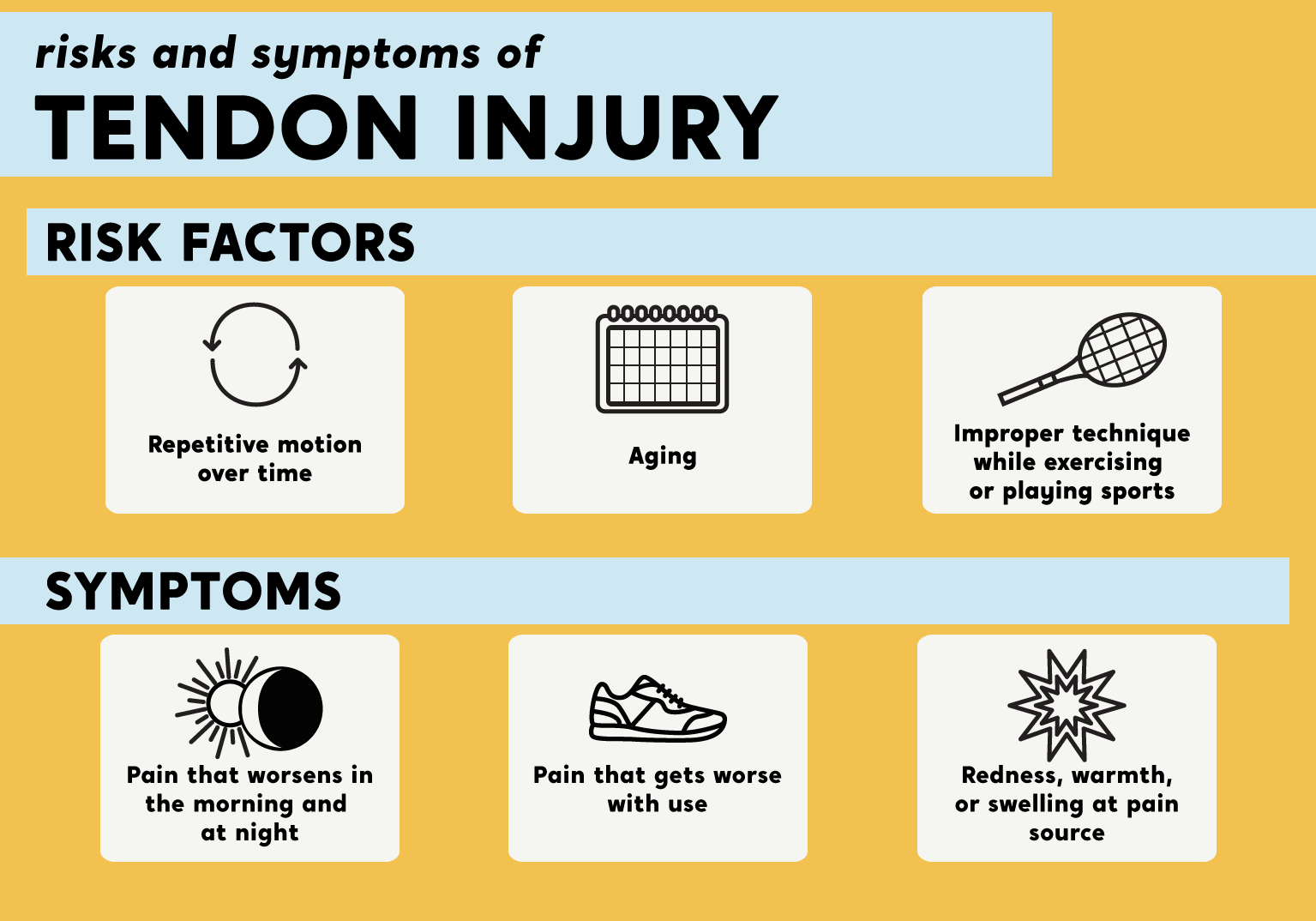Do you suffer from tennis elbow, plantar fasciitis, or some other nagging tendon pain? UVA Health System now offers a minimally invasive, non-surgical treatment for chronic tendon pain that has already been used in over 65,000 successful procedures–Tenex.
Reviewed by Nicholas Nacey, MD and Jennifer Pierce, MD
What Is Chronic Tendon Pain?
Tendons are bands of tissue around your joints that connect muscle to bones, allowing you to bend, walk, jump, and move in general. Healthy tendons are able to make these motions easily and smoothly, but when they are damaged, movement can become painful and restricted. Left untreated, this pain and reduced range of motion will worsen over time.
Chronic tendon pain is caused when a degenerative or injured tendon has developed scar tissue over a period of time. Scar tissue can form either from a sudden injury that has healed or from the repetition of a particular movement, which causes small tears that develop more and more scar tissue as the tendons tear and heal over and over.
Some common names for chronic tendon pain are tennis elbow, golfer’s elbow, plantar fasciitis, jumper’s knee, or Achilles tendonitis. These conditions all fall under an umbrella category for tendon injuries called tendinosis or tendinopathy.
Diagnosing tendinopathy usually starts with the doctor examining the affected limb or joint. After this, the doctor will usually order an x-ray, MRI, or ultrasound to diagnose the tendon more specifically.
Symptoms and Risk Factors
Tendinopathy can develop in any of the body’s tendons over time.
Tenex: A Non-Surgical Treatment Option
Tenex is a non-surgical procedure to directly treat tendinopathy. This procedure is performed by a radiologist, a physician specialized in imaging and image guided procedures.
Tenex utilizes a specially developed ultrasonic needle that oscillates at high frequency. This ultrasonic needle removes degenerated scar tissue in the tendon. The procedure is highly effective, has a comparatively short recovery time, and generally takes 20 minutes or less.
The Tenex Procedure
The radiologist will start by cleaning off the appropriate area of the skin. Real time ultrasound imaging will be used to obtain a continual view of the damaged tendon. A local anesthetic is applied to numb the area surrounding the tendon so patients feel only a little bit of pressure during the procedure.
Next, the radiologist inserts the Tenex ultrasonic needle through a very small incision (less than ¼ inch) near the affected tendon. The doctor uses ultrasound to see the scar tissue on the tendon, then uses the needle to break down and remove the scar tissue, leaving healthy tissue intact. After that, the needle is removed and the area is bandaged.
Patients are able to return home immediately after a Tenex procedure and recover quickly. Recovery time after Tenex is generally 4-6 weeks, about a quarter of the normal recovery time. Physical therapy may be added for some patients to improve the overall success of the procedure. After the procedure, most patients are able to use over the counter medications like Tylenol to relieve any pain.
Choose Tenex Today
If you’re tired of living with chronic tendon pain or tendinopathy, Tenex is a great option that will get you back to your regular activities quickly, without the prolonged recovery time that usually comes with surgical procedures.
To learn more about your eligibility for the Tenex procedure and schedule a consultation, contact the UVA Hand Center at (434-924-0782) for elbow pain and the Foot/Ankle Clinic at (434-243-5432) for Achilles pain or plantar fasciitis.
Do you suffer from calcific tendonitis? If so, click here to read about a minimally invasive treatment option available at UVA.
Infographic Text:
Risks and Symptoms of Tendon Injury
Risk Factors
- Repetetive motion over time
- Aging
- Improper technique while exercising or playing sports
Symptoms
- Pain that worsens in the morning and at night
- Pain that gets worse with use
- Redness, warmth or swelling at pain source




